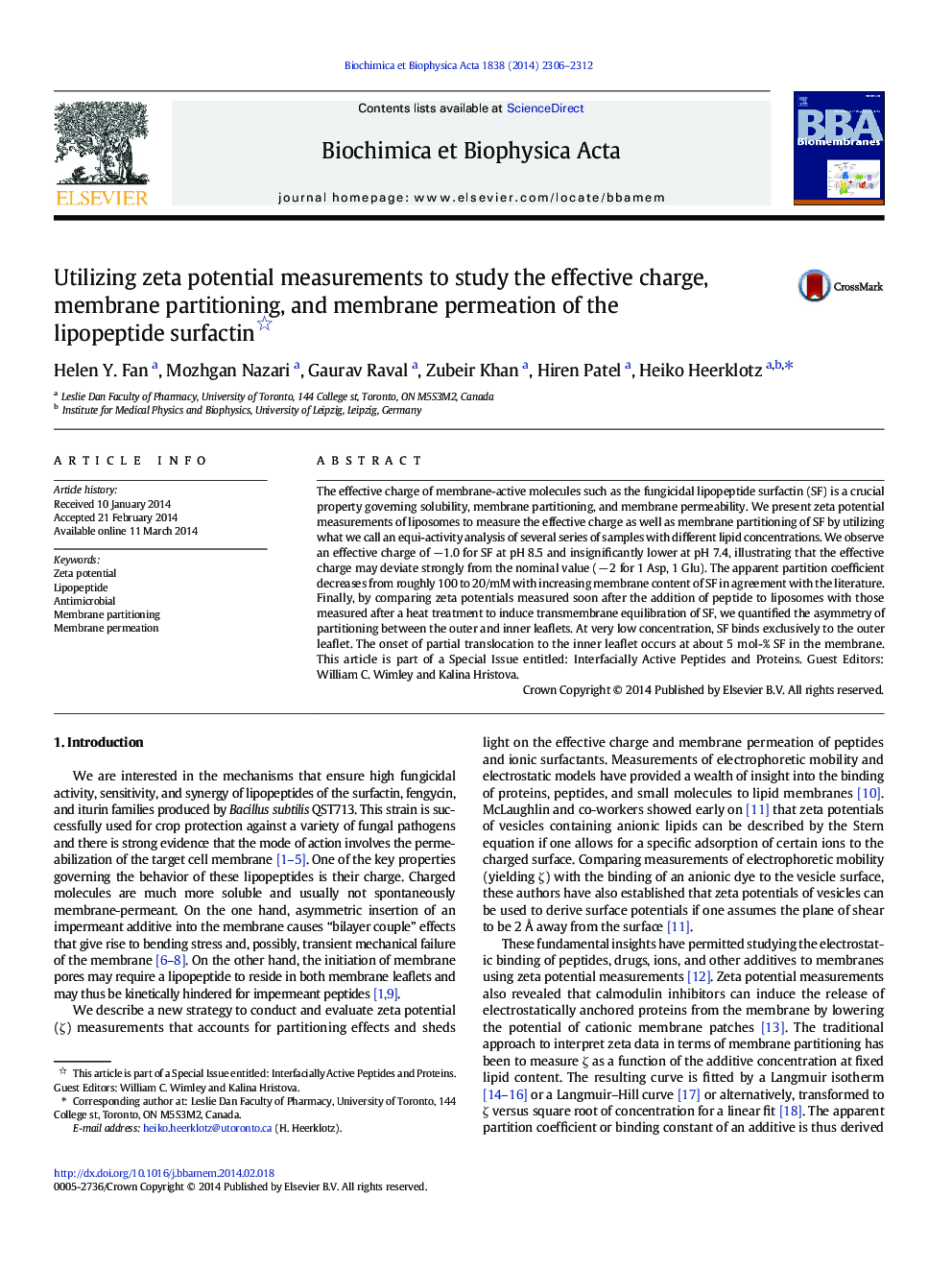| Article ID | Journal | Published Year | Pages | File Type |
|---|---|---|---|---|
| 1944189 | Biochimica et Biophysica Acta (BBA) - Biomembranes | 2014 | 7 Pages |
•Equi-activtiy analysis of zeta potential data yields effective charge and membrane partitioning of peptides.•The effective charge of surfactin at pH 8.5 is -1, in spite of containing Asp and Glu.•Comparison of zeta potentials before and after membrane equilibration reveal asymmetric insertion and induced flip of the peptide in terms of a re-defined accessibility parameter.
The effective charge of membrane-active molecules such as the fungicidal lipopeptide surfactin (SF) is a crucial property governing solubility, membrane partitioning, and membrane permeability. We present zeta potential measurements of liposomes to measure the effective charge as well as membrane partitioning of SF by utilizing what we call an equi-activity analysis of several series of samples with different lipid concentrations. We observe an effective charge of −1.0 for SF at pH 8.5 and insignificantly lower at pH 7.4, illustrating that the effective charge may deviate strongly from the nominal value (− 2 for 1 Asp, 1 Glu). The apparent partition coefficient decreases from roughly 100 to 20/mM with increasing membrane content of SF in agreement with the literature. Finally, by comparing zeta potentials measured soon after the addition of peptide to liposomes with those measured after a heat treatment to induce transmembrane equilibration of SF, we quantified the asymmetry of partitioning between the outer and inner leaflets. At very low concentration, SF binds exclusively to the outer leaflet. The onset of partial translocation to the inner leaflet occurs at about 5 mol-% SF in the membrane. This article is part of a Special Issue entitled: Interfacially Active Peptides and Proteins. Guest Editors: William C. Wimley and Kalina Hristova.
